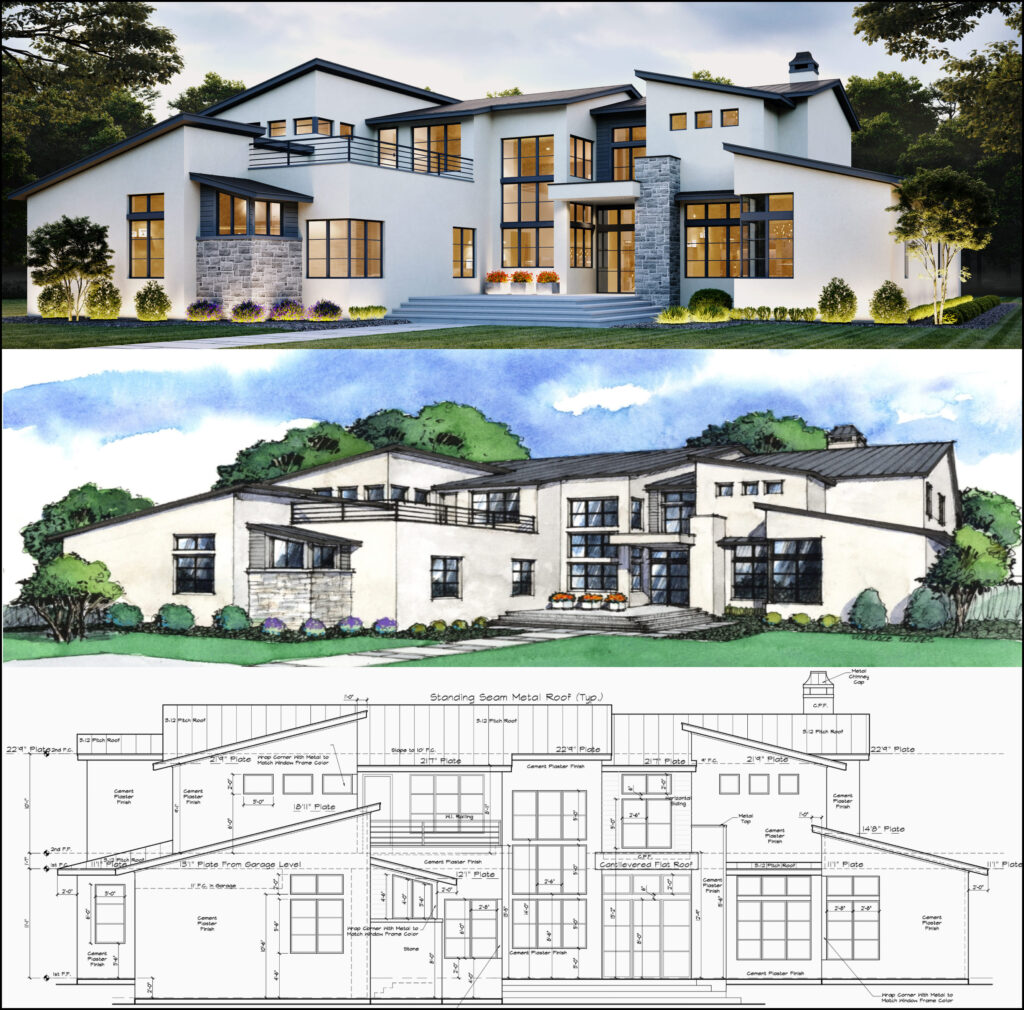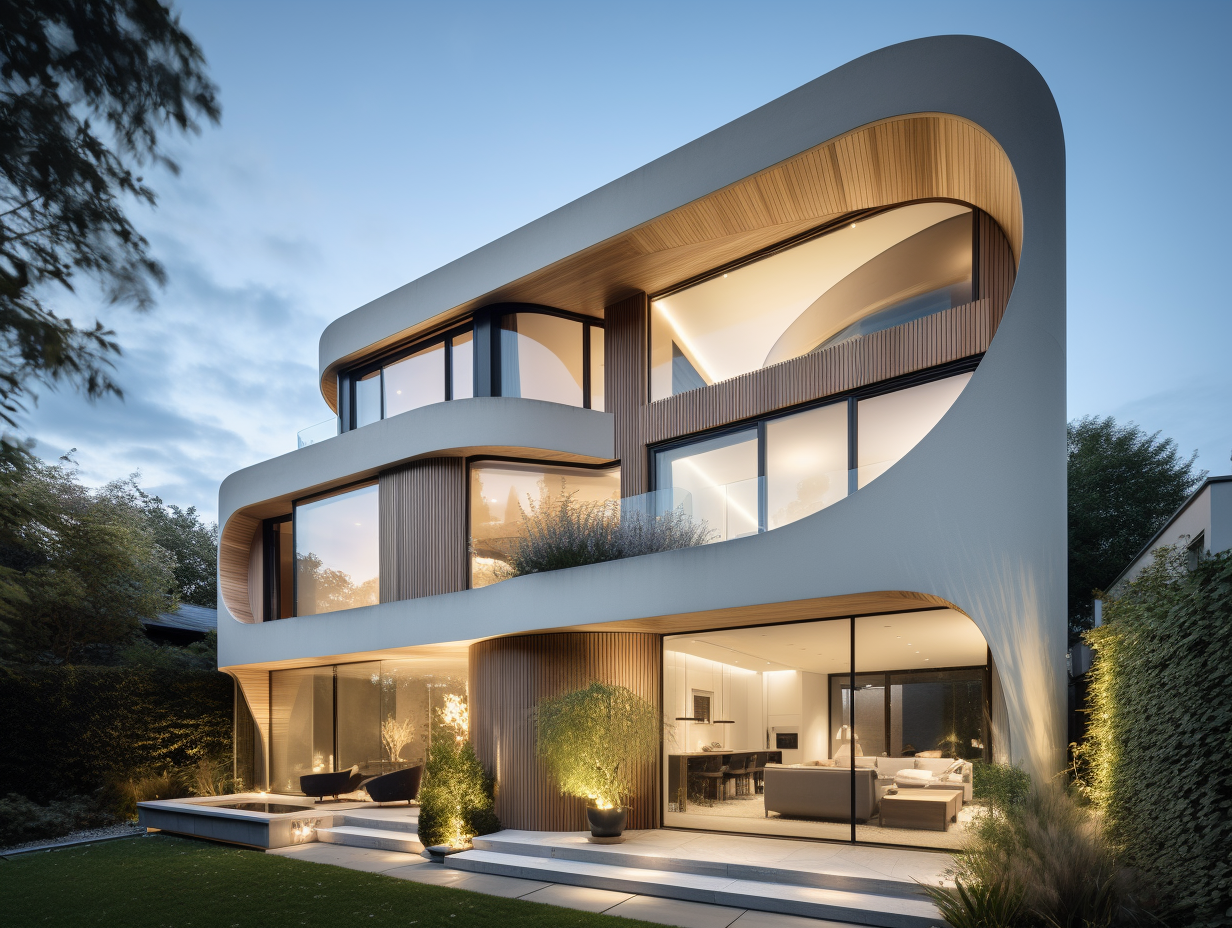Just How CDA Architects Incorporate Creativity and Functionality in Modern Design
Just How CDA Architects Incorporate Creativity and Functionality in Modern Design
Blog Article
The Influence of Technological Improvements on the Design Practices of Contemporary Architects
The rapid evolution of technical tools has dramatically improved the style landscape for modern designers, fostering extraordinary degrees of development and sustainability. The integration of Structure Information Modeling (BIM), parametric layout, and expert system has not just structured collaboration amongst diverse groups however additionally redefined job execution. As architects accept these advancements, they are challenged with complex obstacles that could influence their creative processes. Discovering these dynamics exposes a nuanced interplay in between technology and standard layout techniques, prompting a better examination of what the future holds for architectural methods.
Development of Architectural Devices
How have architectural devices changed the style and building processes over the centuries? The advancement of building devices has considerably impacted the efficiency, precision, and creative thinking of style and construction.
With the introduction of the Renaissance, the introduction of the compass and the protractor noted a crucial change. These tools made it possible for engineers to accomplish greater accuracy in their designs, promoting the introduction of more intricate and proportional structures. The Industrial Revolution better reinvented building experiment the introduction of mechanical tools and products, enabling bigger and a lot more ambitious jobs.
In the 20th century, the development of computer-aided layout (CAD) software application changed the landscape once more, offering engineers with unmatched capabilities in modeling and visualization. Today, progressed tools such as Structure Info Modeling (BIM) and parametric layout software application continue to push the borders of architectural technology, allowing a more incorporated technique to layout and building procedures.
Improved Cooperation in Design
As innovation continues to progress, enhanced collaboration in design has come to be a keystone of contemporary architectural technique. The combination of electronic tools such as Structure Information Modeling (BIM), cloud-based systems, and progressed visualization software program has actually transformed the means architects, engineers, and stakeholders engage throughout the layout procedure. These tools assist in real-time interaction, enabling groups to share concepts, modifications, and comments immediately, despite geographical place.

Additionally, interdisciplinary collaboration has been streamlined through these technical advancements, making it possible for engineers to work much more closely with various other experts, such as metropolitan coordinators and environmental experts. The result is a much more natural approach to create that considers various perspectives and expertise. Inevitably, improved collaboration in layout is not merely a fad; it is necessary for producing innovative, useful, and visually pleasing style in a progressively complex globe.
Sustainability Via Technology
Sustainability in design has increasingly come to be linked with technological advancement, driving the sector toward environmentally accountable practices - cda architects. Contemporary designers are leveraging sophisticated modern technologies to minimize environmental effect while boosting the efficiency of structures. One popular instance is using Structure Information Modeling (BIM), which enables for specific preparation and resource allotment, minimizing waste throughout construction and promoting power efficiency throughout a building's lifecycle
Furthermore, wise materials and energy-efficient systems are being incorporated right into layouts to optimize resource usage. Technologies such as photovoltaic or pv cells and environment-friendly roof harness sustainable power resources, adding to lowered carbon impacts. Additionally, the application of synthetic knowledge in style procedures makes Home Page it possible for engineers to simulate and analyze power intake, guiding decisions towards more sustainable outcomes.
The assimilation of lasting modern technologies not just lines up with global ecological objectives yet additionally fulfills a raising need from consumers for environmentally friendly options. As designers embrace these innovations, the emphasis changes in the direction of producing areas that are not only cosmetically pleasing however likewise functionally sustainable, therefore redefining the criteria of contemporary style. In this means, modern technology acts as a catalyst for sustainability, making it possible for engineers to develop buildings that regard and enhance the native environment.
Difficulties in Implementation
While technical improvements in architecture hold great assurance for improving sustainability, their execution commonly experiences significant obstacles - cda architects. One primary barrier is the steep understanding curve connected with new modern technologies. Designers and building and construction specialists may call for extensive training to successfully utilize sophisticated software application and tools, which can postpone job timelines and increase expenses
In addition, the integration of arising modern technologies, such as Building Info Modeling (BIM) and lasting products, typically requires partnership throughout multidisciplinary groups. This collaboration can be impeded by distinctions in competence, operations, and interaction styles, resulting in prospective problems and inefficiencies.
Financial restrictions better make complex the adoption of innovative innovations. Lots of building companies, particularly smaller ones, may lack the sources to purchase cutting-edge tools, limiting their capability to complete with bigger firms that can manage such financial investments.
Moreover, regulatory frameworks and building ordinance may not keep pace with technical advancements, creating ambiguity and potential compliance issues. This challenge can discourage architects from fully look these up welcoming brand-new modern technologies, as the threat of non-compliance might exceed the benefits. As a result, resolving these execution difficulties is vital for the effective combination of technological improvements in contemporary architectural practices.
Future Fads in Architecture
The difficulties associated with the implementation of brand-new innovations in style have prompted a reevaluation of future fads within the sector. As designers browse problems such as sustainability, urbanization, and social equity, they are progressively adopting cutting-edge innovations to improve layout effectiveness and environmental efficiency.
One popular fad is the combination of expert system (AI) in the design procedure. AI tools can analyze substantial datasets to notify design choices, enhancing both imagination and functionality. Structure Information Modeling (BIM) proceeds to develop, making it possible for real-time partnership amongst stakeholders and facilitating streamlined task management.
Sustainable layout practices are likewise obtaining momentum, with engineers concentrating on adaptive reuse and regenerative style concepts that minimize resource usage and waste. The unification of smart materials and sustainable energy sources will certainly better boost the strength of buildings when faced with climate adjustment.

Final Thought
Technological advancements have actually significantly improved architectural style practices, assisting in enhanced accuracy, collaboration, and sustainability. The assimilation of tools such Full Article as Structure Information Modeling and parametric layout software, together with artificial intelligence and clever materials, equips architects to attend to complex difficulties a lot more effectively.
Report this page